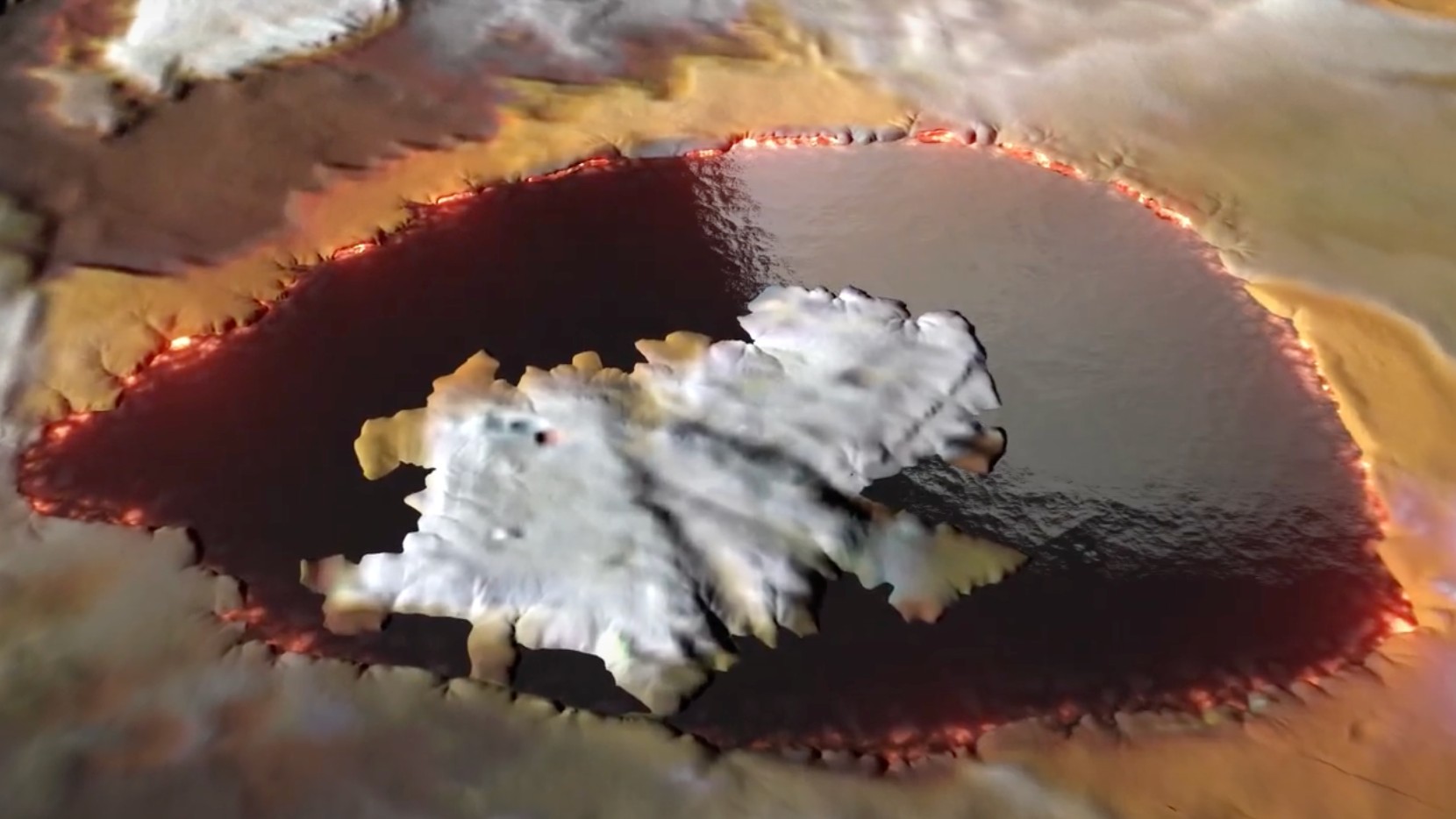
A new animation reveals an enormous lava lake on the surface of Jupiter's moon Io.
The close-up view comes from NASA's Juno spacecraft, which swept within 930 miles (1,500 kilometers) of the volcanic surface of Io in December 2023 and January 2024. These flybys provided the closest look ever at Jupiter's innermost large moon. Io hosts hundreds of active volcanoes. According to NASA, their eruptions are sometimes so powerful that they can be seen with telescopes on Earth.
The new images show Loki Patera, a 127-mile-long (200 km) lava lake on Io's surface. Scientists have been observing this lava lake for decades. It sits over the magma reservoirs under Io's surface. The cooling lava at the center of the lake is ringed by possibly molten magma around the edges, Scott Bolton, principal investigator for the Juno mission, said during a news conference Wednesday (April 16) at the European Geophysical Union General Assembly in Vienna.
"The specular reflection our instruments recorded of the lake suggests parts of Io's surface are as smooth as glass, reminiscent of volcanically created obsidian glass on Earth," Bolton said.
Rugged islands of rock crowd the lava lake's interior. "There is amazing detail showing these crazy islands embedded in the middle of a potentially magma lake rimmed with hot lava," Bolton said.
Related: Uranus and Neptune aren't made of what we thought, new study hints
Juno's instruments have determined that Io's surface is smoother than the surfaces of Jupiter's three other Galilean moons (Europa, Ganymede and Callisto). Io is slightly larger than Earth's moon, and the surfaces that aren't molten are largely covered with yellow sulfur and sulfur dioxide.
Juno continues to fly over Jupiter, collecting data about its dramatic polar cyclones, each of which is the width of the continental U.S. The mission is also measuring levels of oxygen and hydrogen in Jupiter's atmosphere. The spacecraft will complete its 61st flyby of Jupiter on May 12.







